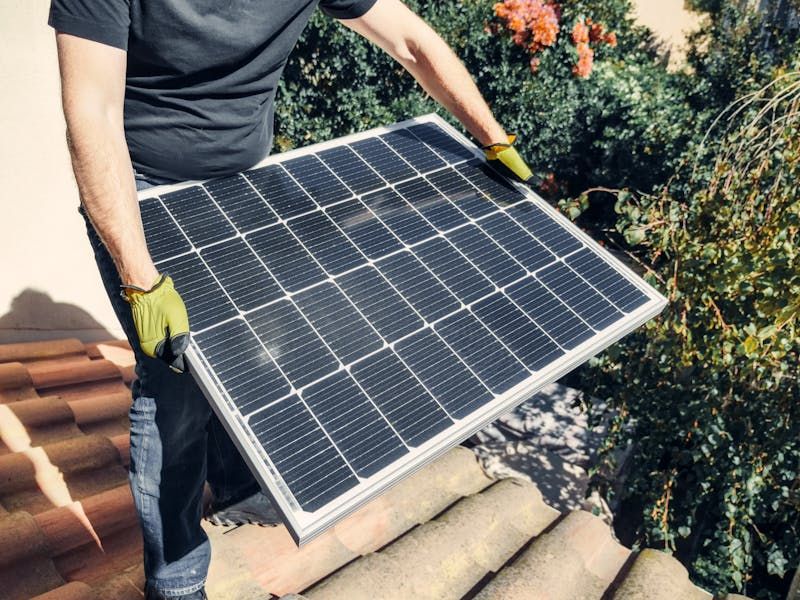
Can I Connect a Solar Panel Directly to a Battery?
As more people look to renewable energy sources, the question “Can I connect a solar panel directly to a battery?” has become increasingly common. Understanding this can help you make the most of solar energy in your home or business. In this blog, we’ll explore the intricacies of connecting solar panels to batteries, discussing why it’s typically not recommended and what alternatives are available.
Understanding Solar Panels and Batteries
Solar panels convert sunlight into electricity through photovoltaic cells. This electricity is in the form of direct current (DC). On the other hand, most batteries store and release electricity in the same form, making the direct connection between a solar panel and a battery seemingly straightforward. However, the process is more nuanced than it might initially appear.
Why Not Direct Connection?
While it might seem simple to connect a solar panel directly to a battery, doing so can lead to several issues. Here’s why:
Overcharging Risks: Solar panels produce varying amounts of electricity depending on sunlight intensity, time of day, and weather conditions. If you connect a solar panel directly to a battery, the battery could become overcharged. Overcharging can damage the battery, reduce its lifespan, and even cause dangerous situations like overheating or leakage.
Voltage Mismatch: Solar panels and batteries might not always have compatible voltage levels. If the solar panel’s output voltage exceeds the battery’s voltage, it can damage the battery or result in inefficient charging. Conversely, if the panel’s voltage is too low, the battery won’t charge properly.
Lack of Regulation: A direct connection lacks a mechanism to regulate the charging process. Without proper regulation, batteries can be charged too quickly or too slowly, both of which can affect their performance and longevity.
The Role of a Charge Controller
To avoid the issues mentioned above, a charge controller is used. A charge controller, also known as a solar charge regulator, is a device that sits between the solar panel and the battery. Its primary function is to regulate the voltage and current coming from the solar panel to ensure that the battery is charged safely and efficiently.
There are two main types of charge controllers:
PWM (Pulse Width Modulation) Controllers: These are simpler and less expensive. They work by adjusting the amount of current that flows from the solar panel to the battery, preventing overcharging.
MPPT (Maximum Power Point Tracking) Controllers: These are more advanced and expensive. They optimize the power output from the solar panel, allowing for better efficiency and faster charging.
Benefits of Using a Charge Controller
Protection Against Overcharging: Charge controllers prevent batteries from being overcharged, which extends their lifespan and ensures they operate safely.
Improved Efficiency: MPPT controllers can increase the efficiency of the system by ensuring that the maximum amount of energy is harvested from the solar panels.
Battery Health: By managing the charging process, charge controllers help maintain the health and performance of the battery.
Alternative Approaches
If you’re considering setting up a solar power system, here are some alternative approaches:
Solar Inverters: For more complex systems, particularly those connected to the grid, solar inverters are used. They convert the DC electricity from solar panels into alternating current (AC), which is then used to power your home or business. In these setups, batteries are usually part of a larger system managed by the inverter.
Battery Management Systems (BMS): For advanced setups, especially in larger installations, a Battery Management System (BMS) can monitor and manage battery health, charging, and discharging, adding another layer of protection and efficiency.
Common Issues When Connecting a Solar Panel to a Battery
Even with the right components in place, there are still some challenges you may encounter when connecting a solar panel to a battery.
Undercharging or Overcharging
If your charge controller isn’t functioning properly or isn’t the right type for your system, your battery could end up undercharged or overcharged. This is why it’s crucial to ensure you have the correct charge controller and that it’s set up properly.
Wiring Problems
Incorrect wiring is one of the most common mistakes people make when setting up their solar energy systems. Double-check your wiring, and ensure that all connections are secure. Loose or faulty wiring can lead to inefficient charging or even damage to your equipment.
Incompatible Components
When setting up your solar panel and battery system, it’s essential to make sure that all components (solar panels, charge controller, battery) are compatible with each other. Mismatched components can lead to poor performance or damage to the system.
Practical Tips for Homeowners
Assess Your Needs: Before setting up a solar panel and battery system, assess your energy needs and consider consulting with a professional to design a system that meets your requirements.
Choose the Right Equipment: Invest in high-quality solar panels, charge controllers, and batteries. The initial cost may be higher, but the long-term benefits in terms of efficiency and reliability are worth it.
Regular Maintenance: Regularly check and maintain your solar power system to ensure it operates efficiently. This includes cleaning solar panels, checking battery levels, and ensuring all connections are secure.
Consider Professional Installation: While DIY projects can be fulfilling, professional installation ensures that your system is set up correctly and safely.
Conclusion
Connecting a solar panel directly to a battery is not recommended due to risks of overcharging, voltage mismatch, and lack of regulation. Using a charge controller ensures safe and efficient charging, protecting your battery and improving system performance. Consider professional advice and high-quality equipment for the best results.

